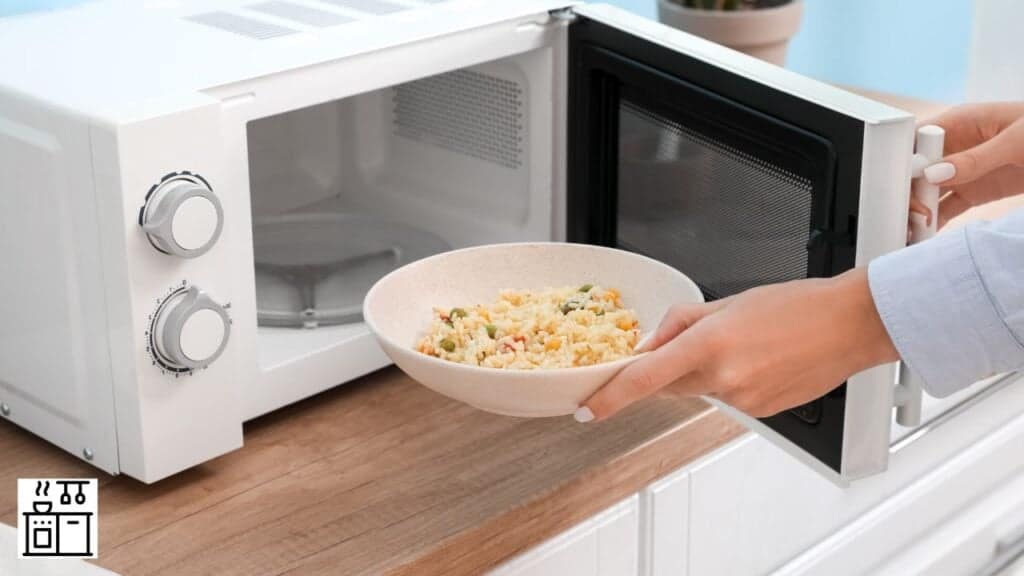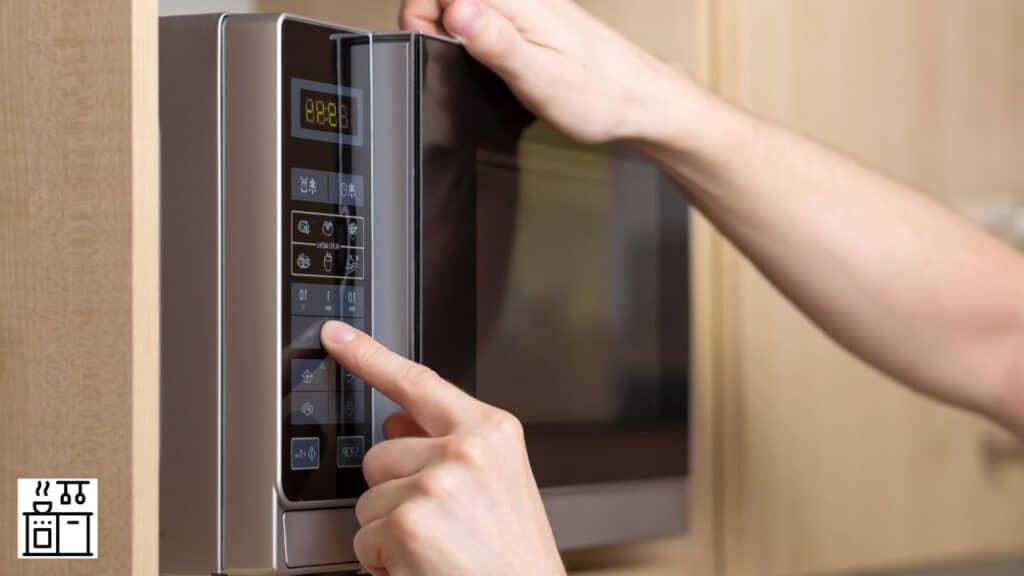A microwave oven is an electric appliance that cooks food using electromagnetic radiation in the microwave frequency range.
The principle of operation differs from that of regular conventional ovens. Additionally, microwave ovens cook food much faster.
Let’s take a closer look at these interesting appliances.
Important Parts of Microwave Ovens
Since microwave ovens were first introduced in the 1970s, these appliances have evolved with many features and functionalities.
But regardless of the complexity of these appliances, all microwave ovens have the following main parts.
1. Magnetron
A magnetron generates microwaves. When it’s active, it converts electricity to high-power radio waves.
These waves blast through the food compartment, making the particles vibrate and produce heat.
2. Cooking Cavity
As the name suggests, this is the space inside the microwave oven where you place the ingredients for cooking.
It has thick walls to prevent microwave radiation from escaping.
3. Waveguide
The waveguide guides the microwaves through the food. It’s a hollow metal tube that directs the waves into the cooking cavity.
The walls allow the microwaves to bounce back and forth through the food, producing heat.
4. Turntable
Microwave ovens have a glass turntable plate at the base of the cooking cavity. It rotates continuously, helping food to cook evenly.
Turntables are heavy, but you can usually remove them to clean up any spills.
5. Control Panel
The control panel is connected to the electronic circuitry that enables users to choose what they want the microwave oven to do.
You can set the cooking time and method using the controls in this area.
6. Door
Microwave ovens have doors with seals around the edges to trap microwave radiation inside the compartment.
The glass will have a transparent window through which you can view the food during cooking.
This window is further lined with a metal mesh as an additional safety precaution.
Operation of A Microwave
Now that we know the parts of a microwave oven, let’s look at how these appliances work.
1. Power the Oven
When you plug on the microwave oven, the magnetron takes electricity from the power outlet.
This component uses a strong magnetic field and electrons to produce high-frequency microwaves.
These microwaves are released inside the cooking cavity of the microwave oven.
2. Directing the Microwaves Toward the Food
The microwaves will move in all random directions inside the compartment. The wave guide inside a microwave oven guides the microwave radiation toward the food.
3. Turntable Keeps the Food Moving
The food to be cooked is placed on the turntable. As it spins slowly, the microwaves reach all the food particles.
4. Cooking of Food
When the microwaves reach the food, they penetrate the food. As they travel through the food particles, the molecules vibrate faster, producing heat.
So the more the food molecules vibrate, the more they become heated.
Step-By-Step Guide to Using a Microwave Oven
Let’s now look at the different steps involved in the operation of a microwave oven
1. Plug It in And Power on The Microwave
As you already know, microwave ovens run on a regular electrical power supply. They come with an electrical cord that connects to the power supply outlet.
Microwave ovens consume 650 to 1200 Watts of power for operation. However, all standard models operate on a regular power supply of 120V at 5.4 to 10 Amps.
To start the operation, connect it to the power outlet and switch it on.
2. Set the Cooking Time and Power Level
Use the control panel on the oven to set the cooking time. Some microwave ovens have a dial for setting the cooking time.
In other cases, it will be a digital display. Use the knob or buttons to set the correct cooking time.
3. Place the Food Inside the Microwave Oven

It’s important to choose microwave-safe dishes to hold the food. Metal or regular plastic utensils are microwave-incompatible.
Instead, choose microwave-safe containers that are specially designed to withstand the high heat of the microwave oven without melting or disintegrating.
Place the ingredients to be cooked inside the dish and put them on the turntable of the microwave.
4. Close the Microwave Door and Press Start
Once you have placed the food inside the microwave oven and selected the operating settings, close the microwave door.
Pressing start will initiate the cooking process. The light inside the chamber will turn on, and the turntable will start turning.
You can see the food cooking through the transparent window on the door.
5. Monitor and Adjust the Cooking Progress as Needed
The window will allow you to observe the cooking process. If you must stir the food or even check on the ingredients during the cooking process, you can open the door mid-way.
Most microwave ovens will not have a separate pause button for halting the cooking process. However, opening the door will automatically stop the oven.
The oven will resume operating when you return the food to the compartment and close the door.
6. Wait Till the Microwave Switches Off
Microwave ovens automatically shut down at the end of the cooking time. Hence, you don’t have to stick around to manually stop the work.
Most microwave ovens will also indicate the end of the cooking process using beeps. You can retrieve the food from the chamber when you hear the beeping sound.
When the cooking is over, the light inside the compartment goes off. Open the door and take the food out. Take care to use oven mitts to remove the food since it will be piping hot.
Safety Tips for Using a Microwave Oven
Microwave ovens are kitchen appliances with built-in safety measures to minimize the occurrence of accidents.
Nevertheless, take care of the following factors to ensure complete safety.
1. Choose Suitable Bowls and Containers for Cooking
Not all utensils can safely go inside a microwave oven. Unsuitable materials like steel, aluminum, and aluminum foil can cause sparks and fires.
You should always check for the Microwave-safe label on them to ensure they are safe to use inside the oven.
Ceramic and some types of glass containers are also safe to use in the microwave oven. But check the label to be sure.
2. Prevent Super-Heating
Liquids in a microwave can sometimes become super-heated. This means that they may not form bubbles, even though they are above their boiling point.
This is a very dangerous situation as the surface can suddenly erupt, causing burns or accidents when suddenly disturbed.
To avoid this, always place a stirring utensil like a glass rod into the liquid before microwaving. You can also use it to stir it in-between to release trapped steam and prevent sudden eruptions.
3. Let the Food Cool Briefly Before Taking It Out
Freshly microwaved food will be very hot, at times high enough to cause scalding or burns. So, wait for a few minutes to handle it.
Let the food rest for at least a few minutes before taking it out of the microwave oven. During this time, the residual heat will continue to cook the food.
Also, don’t forget to use oven mitts or gloves while taking the food from the microwave. This will prevent accidents and make it more convenient to handle the food.

